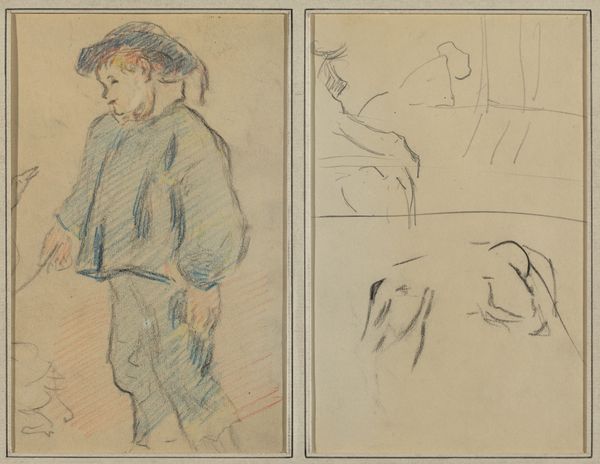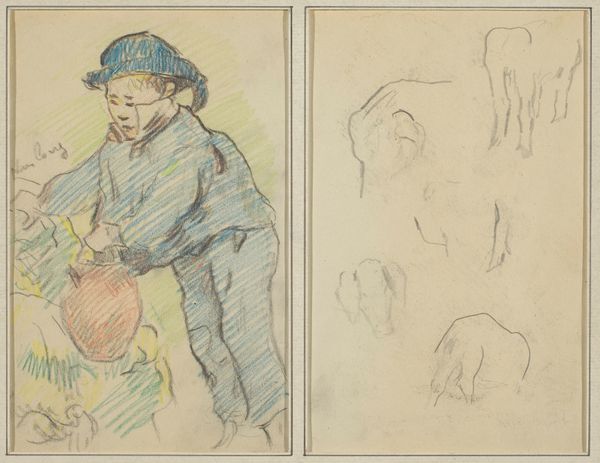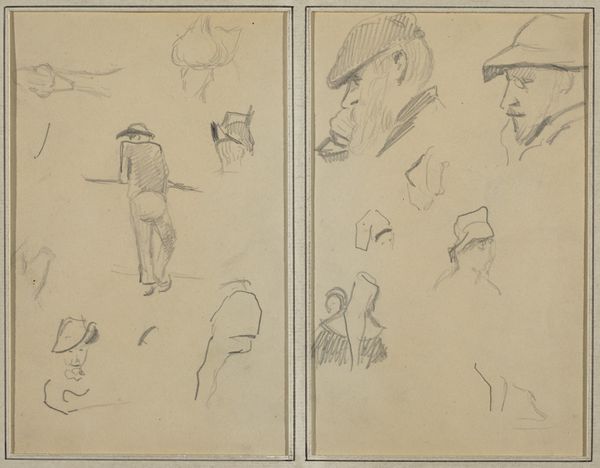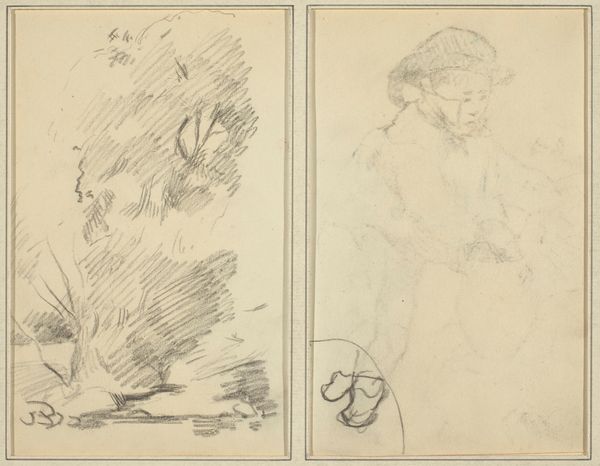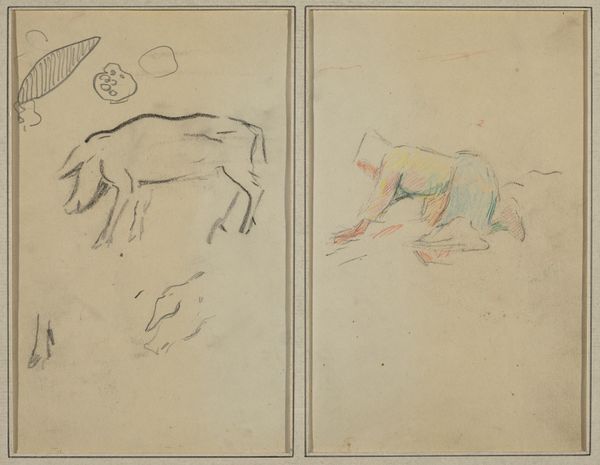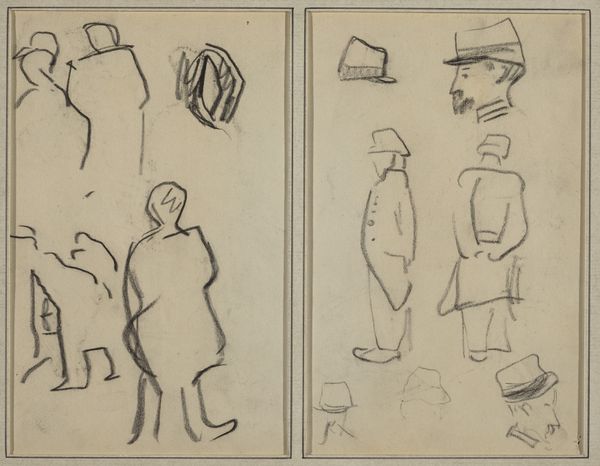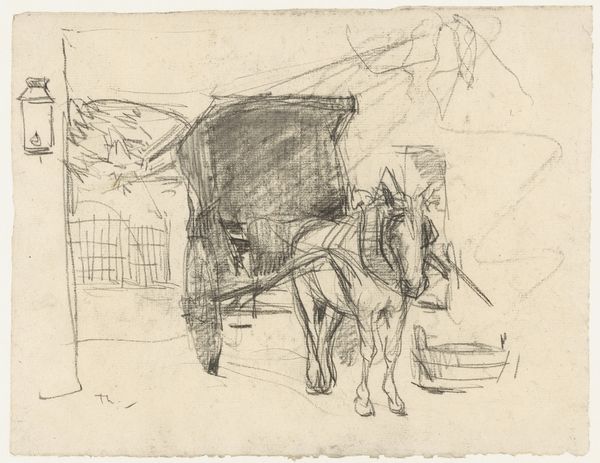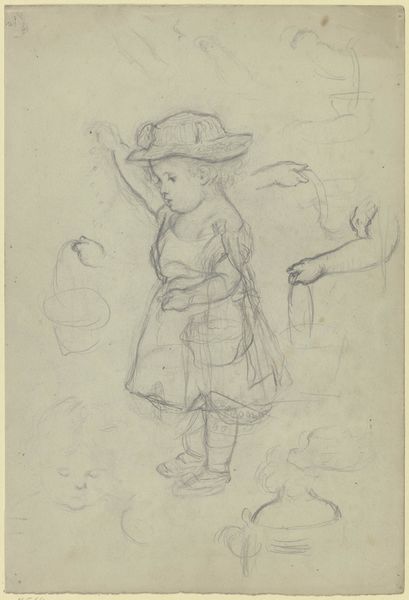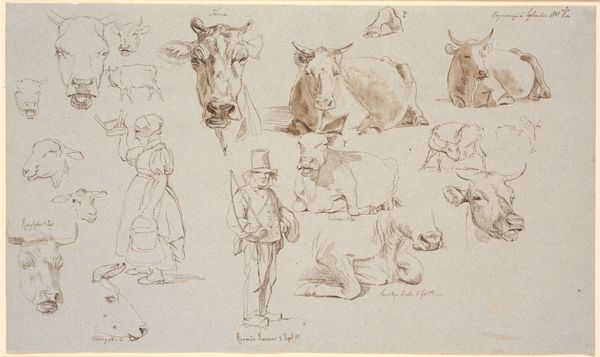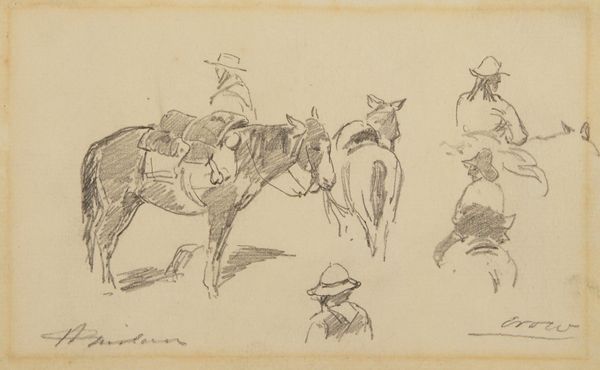![Three Studies of a Pig; Breton Boy Walking with a Jug [recto] by Paul Gauguin](/_next/image?url=https%3A%2F%2Fd2w8kbdekdi1gv.cloudfront.net%2FeyJidWNrZXQiOiAiYXJ0ZXJhLWltYWdlcy1idWNrZXQiLCAia2V5IjogImFydHdvcmtzLzc5NjQwNjRmLTJlYjQtNGQ5My04MDBkLWIyMWIzZmUyMmE1OC83OTY0MDY0Zi0yZWI0LTRkOTMtODAwZC1iMjFiM2ZlMjJhNThfZnVsbC5qcGciLCAiZWRpdHMiOiB7InJlc2l6ZSI6IHsid2lkdGgiOiAxOTIwLCAiaGVpZ2h0IjogMTkyMCwgImZpdCI6ICJpbnNpZGUifX19&w=3840&q=75)
Three Studies of a Pig; Breton Boy Walking with a Jug [recto] 1884 - 1888
0:00
0:00
drawing, watercolor, pencil
#
portrait
#
drawing
#
impressionism
#
pencil sketch
#
figuration
#
watercolor
#
pencil
#
watercolor
Dimensions: overall: 16.9 x 22.6 cm (6 5/8 x 8 7/8 in.)
Copyright: National Gallery of Art: CC0 1.0
Editor: Here we have "Three Studies of a Pig; Breton Boy Walking with a Jug", made between 1884 and 1888 by Paul Gauguin, using pencil and watercolor. It looks almost like two separate sketches put together. On the left, quick pencil studies of a pig, and on the right, a more developed, slightly colored sketch of a boy. What stands out to you in this piece? Curator: What arrests me immediately is the diptych structure. The contrast between the almost purely linear, economic sketches on the left and the more tonal, color-inflected figure on the right is striking. Gauguin forces a formal juxtaposition of line and volume. Consider how the pig studies exploit negative space to define form, a classical drawing technique, versus the layered, atmospheric handling of watercolor around the boy. Editor: So, you're drawn to the *how* it's made, more than *what* it's showing? I find the pig studies a bit simple, like casual doodles. Curator: Not entirely. Observe how even in those 'doodles,' the single, continuous line describing the pig's back dictates the creature’s weight and posture. Similarly, notice the strategic hatching around the Breton boy which creates an optical mixture, suggesting not just light and shadow but also texture in his clothing. Where does Gauguin let the paper show through? Where does he build up the color? These decisions inform our reading as much as, or perhaps even more than, the subject itself. Editor: That makes sense. I can see how the negative space and the different rendering techniques are key compositional choices. I’ll definitely pay more attention to those techniques next time. Thanks! Curator: Indeed. Focusing on the "how" allows us to enter into a richer understanding of the artist’s thought process, transforming seeming simplicity into considered complexity.
Comments
No comments
Be the first to comment and join the conversation on the ultimate creative platform.
